
ICS gears up for next MEPC meeting
APRIL 13, 2016 — The International Chamber of Shipping (ICS) has made a number of submissions to IMO’s Marine Environment Committee (MEPC) ahead of its next meeting, which will be held in

APRIL 13, 2016 — The International Chamber of Shipping (ICS) has made a number of submissions to IMO’s Marine Environment Committee (MEPC) ahead of its next meeting, which will be held in
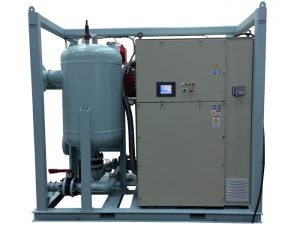
APRIL 13, 2016 — Now in operation on board a Maersk Line ship, the Arnold Maersk, is a newly developed Hydrocurrent Organic Rankine Cycle (ORC) Module 125EJW waste heat recovery system from
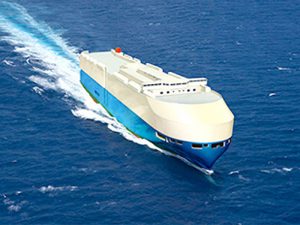
APRIL 8, 2016 — Mitsui O.S.K. Lines, Ltd. (MOL) says that its next generation FLEXIE car carriers will have a rounded bow shape that will minimize wind resistance and is expected to
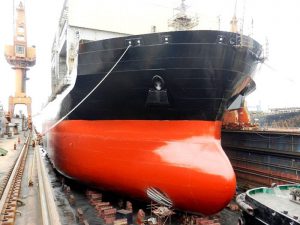
APRIL 7, 2016 — Coatings specialist Jotun reports that it has analyzed the first ever five year drydocking of a vessel treated with its Hull Performance Solutions (HPS) system. The data indicated
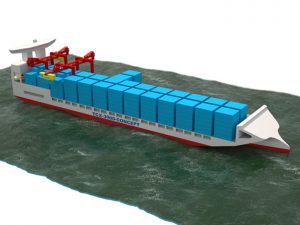
APRIL 5, 2016 – Danish naval architect company Knud E. Hansen has been developing a number of pioneering container feeder vessel designs. Each presents a series of innovations as part of a
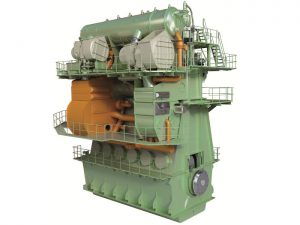
APRIL 5, 2016 – Hyundai’s Ship Building Division (HHI-SBD) has finalized a contract for two Suezmax tankers for Turkish shipowner Ditas Shipping. The 158,000 cu.m crude-oil tankers will each be powered by
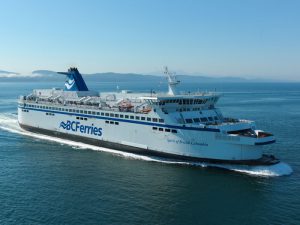
MARCH 24, 2015 — Poland’s Remontowa Ship Repair Yard S.A. of Gdansk has won a $140 million contract for the mid-life upgrades (MLUs) of BC Ferries two Spirit Class ferries. The upgrade
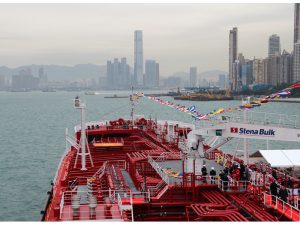
“Tank cleaning is where companies try to establish a competitive edge,” says Ajay Gour, INTERTANKO’s chemicals and vetting expert and Regional Manager for the Indian Sub-Continent, Middle East and Africa. “This is where they can claim to be better than the competition. But the majority of ship operators are all experienced, and the technology and methodology are pretty much the same across the board. Cleaning chemicals have seen some significant advances, but where we found the biggest change was not in cleaning, but in tank testing.”
Testing technology has improved immensely, Gour relates, but operators have not necessarily been the drivers behind improvements. “There are many different external influences, including scientific community, and testing today can measure levels of cleanliness far beyond the original requirements for the same cargoes.”
Ever more sensitive testing methods beg the question: Should tanks be as clean as possible? Or just sufficiently clean?
Lacking a working standard
INTERTANKO studied cases emanating from Houston, a major chemical tanker hub.
“We looked at over 250 different listings,” Ajay Gour recalls. “We found that there were various cleaning standards and varying results for the same cargo with the same end-use. There was evidence that resources were being wasted in over-cleaning, including manpower, energy, time, chemicals, and the resulting emissions were excessive.”
In response, INTERTANKO has proposed a simplified set of standards in order to bring the high-flying cleanliness requirements back down to sea level. “Product manufacturers realize that they have been pushing unduly stringent standards, and they understand that this is a cost driver. In a number of cases, small deviations will not push the cargo off-spec,” Gour maintains.
A working group of chemical tanker operators, owners, charterers, and manufacturers is in the early stages of reviewing existing standards, not for tank cleaning, but for tank cleanliness. “We are not telling anybody how to clean in order to achieve a certain standard,” Gour clarifies, “just advising on what standard they need to clean to.”
Nor do the proposed standards advise on how to test. “For example wall washing,” Gour relates. “It’s been around for a long time, but it has its weaknesses. It gives only a snapshot, not the status of the entire tank.” All the same, INTERTANKO is not singling out wall wash tests, or any other particular method.
“We are simply trying to refine cleanliness standards,” he says, “to make sure they are appropriate for today’s needs. High sensitivity testing is feeding anxiety in cargo owners and charterers, and our intention is to ensure quality while improving efficiency in the use of resources.”
Regarding the timeline for change, Ajay Gour’s advice to owners and operators: Watch this space. “The process is set in motion, and the first draft of new guidelines should be presented by the end of 2016,” he reports. “For this to happen, though, operators, shippers, and cargo buyers must all be on board. The drafting process will be used to quantify the overall benefits, but the end result should be that the goalposts are fixed for everybody.”
Taking the confusion out of tank cleaning
Understanding the required cleanliness standard for your vessels’ next cargo is one thing, but consistently achieving it can be a challenge. With decades of experience in the field, here are some words of wisdom from service leader Wilhelmsen Ships Service (WSS) on how not to go astray in the critical business of keeping tanks and cargoes up to spec.
Regardless of whether it is the result of poor preparation, lack of knowledge, time constraints or inadequate equipment, an unsatisfactory tank cleaning can become very costly, very quickly. Extra time in port, additional labour and chemicals, added surveyor charges, and in the worst cases demurrage claims, can turn what should be a routine exercise into a laborious and dreaded task.
To make matters worse for owners and operators, the issues affecting the tank cleaning process are amplified by the increasingly vigorous ad-hoc cleanliness standards currently being demanded by charterers and cargo owners. Often over-zealous and in many cases totally unnecessary, when it comes to the actual chemistry of contamination, there is unfortunately no officially-defined, universal set of cleanliness standards at present.
Instead, there are just two, very broad and de-facto criteria covering the various tank cleaning requirements currently demanded by charterers.
An inadequate pair
The first is the Water White Standard, which means the tank is visually clean, dry and odour-free. A suitable standard for CPP/vegetable oils, this standard does not involve a wall wash test.
The second, the High Purity Standard (HPE), is required for sensitive cargoes to be loaded such as products applied in food processing (Food Grade) or in pharmaceutical production (USP), where any contamination is unacceptable. All active solvents, such as chlorinated hydrocarbons, glycol ethers, light alcohols, for example, methanol, ketones such as acetone and many hydrocarbons like hexane also require the HPE.
In addition, many chemical companies require the HPE because the application of the product during processing is very sensitive to contamination.
Though there are guidelines on the procedures and typical level of cleanliness required by the High Purity Standard for each and every product available, many companies have additional, off-spec requirements. Creating unwanted confusion for cleaning crews and posing considerable problems when it comes to demurrage claims, these ad-hoc requirements are why bodies such as Intertanko are eager to establish a new, detailed set of cleaning standards. An ongoing initiative aimed at creating an industry wide set of rules, its acceptance is by no means guaranteed. So, for now we’re stuck with the existing pair of standards and the numerous company-by-company and cargo-by-cargo variations demanded by charterers.
In spite of this, with detailed planning, preparation and access to some basic information on the cargo’s properties and the conditions inside and outside the tanks, tank cleaning should actually become a matter of routine. Systematic, efficient and completed quickly to the required standard, whatever that may be. No rejections, hold-ups, incidents or accidents.
Chemistry 101
Knowing the properties of the products you’re discharging and loading, along with understanding how they interact with each other and with the surface of your tanks is obviously key. However, learning this from scratch can seem a daunting prospect, hence the ongoing success of Supercargo specialists. But in practice, the vast majority of commercially traded cargoes and their associated tank cleaning processes can comfortably be managed in-house with access to a specific cargo-handling database, such as Miracle or Milbros, and just a little basic knowledge on the major product groups, as outlined below.
Water-soluble or water-miscible
Water-Soluble substances and water-miscible substances are easy to clean with water. In addition, the solubility of such substances might increase at higher temperatures. While the use of a cleaning agent is not required, it can help reduce cleaning times.
High melting point
Such products should be washed at a temperature of 15-20C above melting point. During washing there should be no ballast water or cold cargoes adjacent to the tank to be cleaned. Special attention must also be given to liquid and vapor line systems to avoid freezing/solidification at cold line segments. Beginning the tank cleaning process as soon as possible after discharge is strongly recommended.
High viscosity
These products should be washed at higher temperatures. In general the viscosity is closely related to the temperature and will decrease at higher temperatures. During washing there should be no ballast water or cold cargoes adjacent to the tank to be cleaned. As with products with a high melting point, washing should begin as soon as possible after discharge.
High vapor pressure/boiling point
Products with a high vapor pressure (higher than some 50 mbar at 20 C) can actually be removed from the tank by evaporation. As always, during ventilation, special care must be taken to prevent the risk of explosion (flammable products) and emissions (toxic vapors).
Polymerization
The initial wash of products that tend to polymerize should be carried out with cold (ambient) water. Washing with hot water results in polimeric residues being left in tanks and lines, meaning an incredibly difficult clean-up job.
Evaporation of volatile substances
Cargoes consisting of mixtures with different vapor pressures should neither be cleaned by evaporation, nor prewashed hot. The evaporation of the light substances from a mixture could result in non-volatile residues, which are very difficult to remove.
Isocynates
Must never come into contact with water, not even the residues, because the reaction product and insoluble urethane (plus CO2) are very difficult to remove. Such products must be washed with a suitable solvent that does not contain any water.
Reaction with oxygen
Drying and semi-drying vegetable and animal oils react with oxygen to form a varnish-like polymeric film. This is very difficult to remove from bulkheads. Since heat increases the speed of the reaction the initial washing of these products must be done with water at ambient temperature, and as quickly as possible.
Reaction with hard water
Formed by the calcium and magnesium present, seawater, for example, has a very high water hardness. This poses no problem for most products, but fatty acids and vegetable oils with a high free fatty acid content will form white sticky residues if they are cleaned with a water of a high water hardness.
Smell
Minor residues of a smell-producing cargo left in lines, valves and pumps (including pump cofferdams) can contaminate a sensitive cargo. To neutralise the smell of some chemicals (e.g. Acrylate, Nitrobenzene or Pygas) the use of a smell killer may be recommended.
Understanding the conditions. Inside and out
Along with product knowledge, an understanding of just how the conditions in and outside tanks can affect a cleaning job is vital for consistently successful cleaning:
The neighboring areas
Temperature is one of the major parameters in any tank cleaning procedure and it must be monitored and managed carefully. The temperature in the cargo tank can be significantly influenced by the surrounding conditions, including outside temperature, seawater temperature, ballast conditions, and the temperature of adjacent cargoes.
Deviations from the desired operating temperature can affect the entire tank or just parts of the tank, typically around bulkheads, tank bottoms or tank walls. Two common results are freezing due to lower than allowed temperature, and polymerization/drying due to higher than allowed temperature.
The Tank Surface
Having managed the surrounding conditions, focus should turn to the surface of the tanks. Their composition and condition can have significant implications for the cleaning process.
Stainless steel
Corrosion can occur if there is surface contamination. Both pickling and passivation are chemical treatments applied to the surface of stainless steel to remove contaminants and assist the formation of a continuous, passive chromium oxide film. Pickling and passivation are both acid treatments and neither will remove grease or oil. If the steel is dirty, it may be necessary to use a detergent or alkaline cleaning before pickling or passivation.
Zinc silicate coating
An anti-corrosive paint system made from zinc dust, with certain additives and a binder. The high levels of zinc dust produce a zinc-zinc metal contact resulting in cathodic protection, similar to that obtained from galvanizing. However, zinc coatings are inherently porous, presenting a variety of cleaning problems. It is believed that the cargo migrates into the pores and capillaries, similar to fluid adsorption processes. Zinc coatings have a good resistance against solvents, but are not resistant to strong acids and bases.
Epoxy coatings
Pure epoxy, phenolic epoxy and isocyanate epoxy form cross linkages resulting in relatively good resistance to a greater range of cargoes. Epoxy systems are usually resistant to some weak acids and strong alkalis and do not absorb oil-like substances. Epoxy coatings are, however, prone to absorbing some solvent-like cargoes. This absorption is caused by swelling and subsequent softening of the coating. After transporting aggressive cargoes, the coated tank has to be ventilated until the cargo has been desorbed (released) from the coating film, which results in hardening and decreased swelling. This can take up to several days, depending on the type of cargo, type of coating and film thickness. Water may not be used for cleaning until this ventilation process is finalized. Otherwise the water can lead to blistering and subsequent serious damage of the coating. The more solvency power a cargo has, the more cargo residues could still be present in the coating. This could lead to either contamination of the next or subsequent cargoes, or breakdown of the coating film.
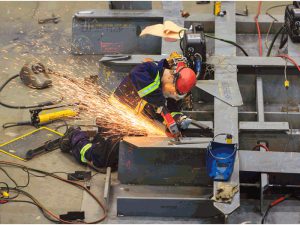
Oil and gas E&P generates billions of dollars worth of business annually for shipyards in the form of newbuilds, conversions, and ongoing repairs and maintenance. With the downturn in oil, however, much of that business has dried up and forced shipyards that depend on the oil patch to rethink their strategy. Many are repositioning themselves to pursue other markets or are undertaking capital investments in their facilities to be more efficient and competitive.
There’s no better example than VARD Holdings, one of the world’s largest shipbuilding groups, whose portfolio is heavily focused on offshore oil and gas. Amid losses of NOK1.29 billion (about $148 million) VARD said last month it would preserve its core expertise and skilled employee base and use its existing shipyard capacity until an eventual recovery in its core market. Among the areas it was pursuing were the offshore wind and aquaculture markets. It will also work more closely with its major shareholder, Fincantieri, to support the cruise vessel and offshore patrol vessel sectors.
NORTH AMERICAN SHIPYARDS INVEST, DIVERSIFY
While operators in the Gulf of Mexico have cold stacked many of their vessels, Galliano, LA-based Edison Chouest Offshore, one of the world’s largest offshore support vessels operators, announced last month that it would invest $68 million in opening a new shipyard in the Port of Gulfport, MS. The shipyard, called TopShip, LLC, will operate at the former Huntington Ingalls Composite Facility, which was acquired by the Port of Gulf Port last March.
The new yard was made possible through an incentive package from the Mississippi Development Authority that would help bring TopShip to the port and create over 1,000 jobs, according to Jonathan Daniels, Executive Director and CEO of the Mississippi State Port Authority—the job creation would prove a significant boost to the local economy.
Lawmakers approved an $11 million package through the Mississippi Major Economic Impact Authority—with $10 million going to discretionary funds and $1 million allocated for workforce training. Additionally, the Port has said it would provide $25 million in Katrina-CDBG funds for infrastructure improvements.
ECO already operates shipyards in the U.S. and one in Brazil: North American Shipbuilding, Larose, LA, LaShip, Houma, LA, Tampa Ship, Tampa FL, Navship in Brazil, and Gulf Ship which is also in Gulfport. Most of ECO’s fleet has been constructed at one of its yards.
Having been born in Mississippi, Gary Chouest, ECO President and CEO expressed his gratitude towards the state for the opportunity to provide quality service to its customers, and help the community thrive.
“We are indeed excited about the opportunities to grow TopShip in a business friendly state, one where we can reach out into the community to recruit various skill sets, developing a quality workforce that will allow TopShip not only to compete locally, but also globally,” said Chouest. “With the help of the state of Mississippi, we will modify our TopShip facility to become one of the safest and most efficient shipyards in the nation, building Chouest pride for our employees.”
Mississippi’s VT Halter Marine, too, has seen how investing in its facilities can help business. Over the last 10 years, VT Halter has invested over $100 million to upgrade its three facilities in Mississippi. This includes expanding beyond the newbuild business with a $13 million investment in a new drydock and repair facility back in 2015, the addition of a blast and paint facility; and the purchase of a 76,000 ft2 climate-controlled warehouse.
The investments have not only allowed growth into the repair business, but also made VT Halter Marine more efficient in its newbuild projects, enabling it to meet the growing demands of the increasingly popular Articulated Tug and Barge (ATB) market. Most recently, VT Halter completed the second of two 250,000 bbl ATB units for Bouchard Transportation (see this month’s CEO Spotlight); and currently is preparing the delivery of the second of two 130 ft, 6,000 hp ABS class ocean towing ATB tugs for Bouchard.
VT Halter Marine is also currently building two 2,400 TEU LNG-powered combination ConRo ships for Crowley Maritime Corporation’s liner services group. El Coquí and Taíno will operate in the Jones Act trade between Florida and Puerto Rico and will offer a 38% reduction in CO2 emissions per container. The ships will be delivered by VT Halter Marine in 2017.
Another yard that has benefited from the use of Liquefied Natural Gas (LNG) as a marine fuel is Conrad Industries. The last few years has seen Conrad Industries, Inc., Morgan City, LA shifting its business approach and diversifying its portfolio—among the shipbuilder’s offerings, it builds tugs, ferries, ocean tank barges, liftboats and specialty barges. In 2015 the yard’s orderbook received a much-needed boost with new construction contracts, including the history-making construction of the first LNG bunker barge for the North American market.
Currently under construction at Conrad’s Orange Shipyard, Orange, TX, the 2,200 m3 capacity bunker barge is being built for WesPac Midstream LLC. Designed by Bristol Harbor Group, Inc., Bristol, RI, and built to ABS class, the barge when delivered later this year will serve TOTE’s Marlin class containerships—Isla Bella and Perla del Caribe, both built at General Dynamics NASSCO. Those LNG-fueled ships are already operating in the Jacksonville to Puerto Rico trade.
It was also certified by GTT to construct the special LNG containment system on the LNG transport bunker barge.
 The shipbuilder has also broadened its offerings further with the expansion of its Deepwater South facility in Amelia, LA. The 52-acre site has enabled Conrad to build large articulated barge units. Currently there are eight tank barges under construction at Deepwater South—ranging from 55,000 bbl to 83,000 bbl capacity.
The shipbuilder has also broadened its offerings further with the expansion of its Deepwater South facility in Amelia, LA. The 52-acre site has enabled Conrad to build large articulated barge units. Currently there are eight tank barges under construction at Deepwater South—ranging from 55,000 bbl to 83,000 bbl capacity.
Conrad says that Deepwater South will undergo a wide range of improvements this year including the addition of a new fabrication and assembly building—which will allow for the uninterrupted construction of hull modules year round; and a new Panel Line Building—expected to begin operations this April. The Panel Line Building will be equipped with an automated welding system, a stiffener fitting gantry to automate the fit-up of stiffeners on the panels, and an 8-headed automated stiffener welder—allowing for the shipyard to process 350 tons of steel per week.
THREE NEW FAB BAYS
C&C Marine and Repair, Belle Chasse, LA, is focusing on increasing efficiencies to maintain its competitive advantage. The yard recently added three new fabrication bays giving C & C an additional 115,000 ft2 for the construction of boats and barges; and a fabrication area of 230,000 ft2.
Over the next few months, the yard plans to order two additional transporters (it currently has two capable of moving 600 tons) with a capacity of 830 tons, bringing the total capacity of its transporters to 1,430 tons. This, says New Construction Manager Matthew J. Dobson, will create new opportunities for the yard, and enable C & C to begin taking orders for the fabrication of new 30,000-barrel barges and allow it to transport larger vessels to land for repair projects and paint jobs.
The yard currently has 29 new construction vessels under contract including three 6,600 hp towboats, one 280 ft PSV, one 270 ft cutter head barge, sixteen tank barges and eight deck barges of various sizes.
EXPANDING INTO LARGER VESSELS
Back in 2014, Metal Shark Boats, Jeanerette, LA, was already a successful builder of aluminum vessels, but it had its sights on the construction of vessels up to 90 ft in length and larger, as well as expansion of its portfolio to include steel. It also signed a technology agreement with Damen that would allow it to build offshore patrol boats up to 165 ft in length.
With the development of the new shipyard in Franklin, LA, Metal Shark, now employs 230 workers between its boat yards, and is among the busiest boatbuilders in the U.S., currently producing a number of 38 ft, 45 ft and 55 ft Defiant class vessels and constructing large orders for the U.S. Coast Guard, U.S. Navy and multiple agencies across the U.S. It also delivered a sophisticated 75 ft multiple purpose port security fire boat to the Port of South Louisiana.
EYE ON THE CARIBBEAN MARKET
For St. Johns Ship Building, diversification of its portfolio and the markets it reaches will propel its next evolution. The small shipyard, which has been under private ownership since 2006, recently delivered the first Elizabeth Anne class of towing vessels to the Vane Brothers Company. The tug is the first in a series of eight the Palatka, FL-based yard is building for the operator. At press time the second vessel was in the water and the third was about to be launched.
St. Johns Ship Building’s yard sits along the St. Johns River—giving it the unique advantage of being on the East Coast with access to both the Gulf of Mexico and the Caribbean—and its because of its location St. Johns has been able to produce such a diverse portfolio. From OSVs to tugs (a new market for the builder), to coast guard vessels and cargo ships, St. Johns’ 100 acre facility and its 150 employees are at the ready to take on any project.
St. Johns Ship Building President Steven Ganoe says that because the yard doesn’t solely rely on the oil and gas market it has been able to keep business steady during the downturn in the oil and gas market.
Ganoe says the shipyard is keeping tabs on the Caribbean market to see how it develops in the wake of the easing of restrictions on Cuba travel—and determine how St. Johns can help meet any growing demand in that specific market. In the meantime, the shipbuilder continues to make improvements to its facility—having recently added an 18,000 ft2 assembly shop and a Messer CNC 80 ft table to help make production more efficient.
REBORN AS WORLD MARINE
Earlier this year it was announced that World Marine LLC—owned by the Teachers’ Retirement System of Alabama and the Employees’ Retirement System of Alabama—had bought all of Signal International’s assets including its full service and heavy fabrication facilities in Mobile, AL and Pascagoula, MS.
According to the Chapter 11 plan of liquidation, World Marine is seeking to become a leader in the ship repair and ship construction market.
World Marine assures that its experienced team—led by Dick Marler—can handle all types of vessels, but the company will place a high focus on new construction, and the repair and conversion of ocean going vessels and offshore drilling rigs—serving the energy, government and commercial marine markets.
World Marine’s construction and repair facilities include three drydocks—a 22,000-ton Panamax class, a 4,200-ton, and a 20,000 MT heavy lift. The company says its future plans include pursuing the emerging LNG market for the construction of bunker barges and transfer vessels.
NEW DRYDOCK AT COLONNA’S
A decade after the American Civil War ended, Colonna’s Shipyard was founded by Charles J. Colonna. Now, 140 years later, the yard continues to operate and develop with the times.
The shipyard currently occupies over 100 acres of land in the Berkley section of Norfolk, VA, and has water access to over 3,000 ft of vessel berthing space and a lift capacity to accommodate vessels up to 850 long.
Colonna’s is also home to the largest Travel lift in the U.S.—with a capacity of 1,000 metric tons.
As part of its future improvement plans, Colonna’s expects to purchase an additional 25 acres across the street from its main entrance, and add a new floating dry dock.
A few months ago, the Governor of Virginia, Terry McAuliffe, announced that the yard would undergo a significant expansion, with Colonna’s investing over $30 million to expand its operations in the City of Norfolk. The expansion would include a new larger drydock, dredging and improvement work to the channel and bulkhead work, and the creation of 51 jobs to the area.
The new floating drydock, which will be named the Charles J., will have a lifting capacity of 11,500 metric tons, an overall length of 595 ft and an inside width of 108 ft. The Charles J. is expected to be fully operational in early 2017 and will accommodate a variety of vessel types including ferries, tugs, barges, containerships, OSVs and several type of government vessels.
Colonna’s CEO Tom Godfrey, said the capital investments would “allow Colonna’s to continue to provide quality services to both commercial and government customers throughout the region.”
 NEW DRYDOCKS, AT BAE, DETYENS, BAY SHIPBUILDING
NEW DRYDOCKS, AT BAE, DETYENS, BAY SHIPBUILDING
Meanwhile, South Carolina-based Detyens Shipyards recently took delivery of its new floating drydock. Built by Corn Island Shipyard, Grandview, IN, the 400 ft x 108 ft drydock will enable the yard to provide a more cost-effective service to smaller tonnage vessels.
According to Detyens, in the past, smaller vessels would have to piggy back in the yard’s larger graving dock—now with the addition of the smaller dock, it can provide drydock services to vessels up to 11,000 DWT. The new dock sits along the yard’s F Pier, which recently underwent upgrades that included the addition of shipyard services, additional lighting, and dredging of 30 ft.
On the U.S. West Coast, BAE Systems is investing $100 million to build and install a second, larger drydock at its San Diego shipyard. Currently under construction in China, the 950 ft drydock will have a lifting capacity of 55,000 long tons and is expected to support the expansion of the Navy ships homeported in San Diego, which are expected to increase by 20 from 60 to 80 by 2020, according to BAE’s Director of Communications, Karl Johnson. BAE Systems is among the leading providers of maintenance and modernization services of the U.S. Navy.
Portland, OR, Vigor Industrial has been aggressively growing its business through the acquisition and merger with several other regional shipyards, including Kvichak Marine Industries, Seattle, WA.
In 2014, Vigor’s Portland yard began operating its new $50 million drydock, the Vigorous. It has been consistently booked since, supporting hundreds of jobs and attracting work that could not have previously be performed in the region, according to Vigor’s Athena Maris.
 Vigorous, with a lifting capacity of 80,000 long tons, is 960 ft long with an inside width of 186 ft and has taken on several repair work projects including the repair work on cruise vessels, and most recently, this past summer, on repair the hull of the multipurpose icebreaker on charter for Shell, the MSV Fennica.
Vigorous, with a lifting capacity of 80,000 long tons, is 960 ft long with an inside width of 186 ft and has taken on several repair work projects including the repair work on cruise vessels, and most recently, this past summer, on repair the hull of the multipurpose icebreaker on charter for Shell, the MSV Fennica.
The addition of Vigorous at the Portland yard, enabled Vigor to also reinvest in some of its existing assets. Specifically, Vigor was able to upgrade and transfer one of Portland’s drydocks to its Seattle facility. In Seattle, the drydock Vigilant will be used to perform repair work on the recently awarded Structural Enhancement Drydock Availability (SEDA) Projects. There, the U.S. Coast Guard cutters Bertholf and Waesche will both undergo significant structural enhancement work, system upgrades and maintenance.
Beyond that Vigor is placing capital investments efforts on its environmental stewardship—this includes working on a comprehensive storm water management system at its Portland facility and a shallow-water estuary to help increase the survival of young salmon and steelhead trout on their way to the ocean at its Seattle facility.
 On the Great Lakes, Fincantieri Bay Shipbuilding (FBS) parent, Fincantieri Marine Group (FMG), has invested more than $33 million in capital improvements to increase manufacturing capabilities at its facility in Sturgeon Bay, WI. FMG is currently in negotiations to acquire additional property adjacent to the shipyard to further expand its serial production capabilities.
On the Great Lakes, Fincantieri Bay Shipbuilding (FBS) parent, Fincantieri Marine Group (FMG), has invested more than $33 million in capital improvements to increase manufacturing capabilities at its facility in Sturgeon Bay, WI. FMG is currently in negotiations to acquire additional property adjacent to the shipyard to further expand its serial production capabilities.
FBS has completed its new Pipe/Outfitting Building & New Welding Center and added a new floating dry dock that has a total lift capacity of 7,000 long tons. The versatile dry dock can be sectioned off, with a 216 ft section and a 432 ft section.
It has completed the expansion of its Fabrication Building and has added a new Beveling Plasma Burning Machine, 200-ton Yard Transporter, IMG Micro Panel Line, and 1000-ton CNC Press.
Back in 2012, FBS added a 45 ft x 47 ft “megadoor” to the south end of its Fabrication Building 311 to allow larger vessels to be built indoors and moved outside for launching and a Manitowoc 300-ton capacity Model 2250 Crawler Crane.
FBS employs 600 to 800 full-time shipyard professionals and expands its workforce to 1,100 to 1,200 using temporary and contract workers during the Winter Fleet repair season.
FBS currently has under construction six tugs and seven barges of ATB design. Accompanying photo shows the ATB tug Barbara Carol Ann Moran and the ocean tank barge Louisiana at the shipyard. As we reported back on February 22, the shipyard has 14 vessels undergoing a wide range of repairs and repowerings for the Great Lakes Winter Fleet.
SAN DIEGO BOATBUILDER GETS BIGGER, GREENER
Vigor, however, isn’t the only shipbuilder looking to help the environment. San Diego based Marine Group Boat Works will soon break ground on a $1.5 million green initiative that will see the yard install a solar panel system compliant with the state of California’s Solar Initiatives.
The addition of solar power comes during one of the company’s most exciting periods, says Marine Group Boat Works’ (MGBW) Leah Yam. MGBW, which has two yards in San Diego and one in San Jose del Cabo, Mexico, recently completed a $2.5 million renovation to its deepwater floating docks system, and will install the final set of docks this spring—making it fully ready for in-water repairs on vessels up to 420 ft in length.
Among MGBW’s most recent repair and retrofit projects is the $19 million refurbishment of the Golden Gate ferry M.S. San Francisco and the conversion of two high-speed aluminum Sub Chapter K San Francisco ferries for the Water Emergency Transportations Authority.
Beyond its repair business, MGBW is also making a dent in the new construction market. Since launching its new construction division in 2008, the shipyard has increased its employee numbers by about 195%, employing 185 workers. Currently, MGBW has five 60 ft aluminum dive boats under construction for the U.S. Navy—the contract calls for the construction of 16; and most recently delivered the first in a series of steel workboats to Japan—two additional boats are on their way, and twelve are on the production schedule, says Yam.
CANADIAN YARDS INVEST FOR NSPS
The end of 2014 saw the completion of Seaspan’s Shipyard Modernization project. Funded entirely by the shipyard, the $155 million project helped transform Seaspan’s Vancouver Shipyards into one of the most modern yards in Canada.
 The two-year project included the addition of four new fabrication buildings—housing a sub assembly shop; panel shop with panel line; block assembly shop; pre-outfitting shop; paint and blast shop; and Canada’s largest (300 tonne) permanent gantry crane.
The two-year project included the addition of four new fabrication buildings—housing a sub assembly shop; panel shop with panel line; block assembly shop; pre-outfitting shop; paint and blast shop; and Canada’s largest (300 tonne) permanent gantry crane.
The expansion was integral to meeting the newbuild project requirements for the Canadian Coast Guard and the Royal Canadian Navy.
Vancouver Shipyards is currently building the first Offshore Fisheries Science Vessel (OFSV) under the National Shipbuilding Procurement Strategy (NSPS) for the Canadian Coast Guard. The 208 ft x 52.5 ft OFSV will help support scientific and ecosystem research critical to the economic viability and health of the region’s marine environment. At press time, 30 of the 37 blocks of the OFSV were under construction.
Seaspan also invested an additional $15 million at its Victoria Shipyards, upgrading its facilities with the addition of a new operation center that, according to Seaspan, would help support testing, trails and commissioning new federal vessels.
At press time, there were nine vessels undergoing refits and drydock work at one of Seaspan’s yards—including the 94 ft Canadian Coast Guard vessel Siyay with is undergoing a nine-month midlife modernization refit.
Keeping the future in mind, Seaspan is also investing in its workforce. Seaspan employs 1,500 employees across its three shipyards—Vancouver Shipyards, Vancouver Drydock, and Victoria Shipyards.
In 2015, the shipbuilder received a Canada Jobs Grant to develop e-learning tools for its expanding workforce—the goal of the funding was/is to help ensure workers have a common understanding of the shipbuilding processes, practices, and protocols.
Seaspan also recently announced that it plans to invest $2 million over the next seven years to help support teaching and research in the University of British Columbia’s naval architecture and marine engineering programs.
At Irving Shipbuilding, Halifax, NS, Canada, the company’s $330 million capital investment plan is already paying dividends. Last September, it marked the start of production of the HMCS Harry DeWolf, the first Arctic Offshore Patrol ship (AOPS) for Canada.
The ship is the first of up to 21 vessels that will renew Canada’s combatant fleet over the next 30 years under the NSPS. Irving Shipbuilding has built more than 80% of Canada’s current combatant ships.
Current direct employment at Marine Fabricators in Dartmouth and the Halifax Shipyard is about 900. Over the next two years, the workforce at both sites is expected to rise to 1,600, with over 1000 directly employed on AOPS production. In addition, total employment at Irving Shipbuilding (all operations) is forecasted to rise to over 2,500 direct employees at peak production of the larger Canadian Surface Combatant vessels that will replace Canada’s current fleet of Halifax Class frigates.
To date, the modernization at Irving Shipbuilding and the AOPS contract have resulted in over $1 billion in spending commitments.
Meanwhile, one of the oldest shipyards in North America, Chantier Davie Canada Inc., Levis, Quebec, has taken its first steps in the Resolve-Class Auxiliary Oiler Replenishment ship project. The project involves the conversion of a containership into an Auxiliary Oiler Replenishment Ship that will be delivered to the Canadian Royal Navy in 2017.
It also recently completed the refit of four of Canada’s heaviest icebreakers, as well as a bulk carrier and is a pioneer in the construction of LNG-fueled ferries.
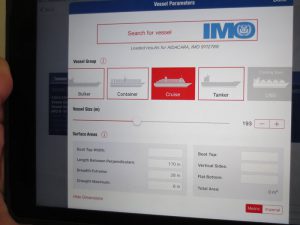
MARCH 11, 2016 — AkzoNobel says its marine coatings business has added cruise vessels to Intertrac Vision, its “big data” tool designed to provide accurate and transparent predictions on the fuel and